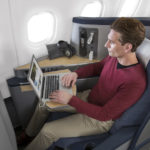
#GCASPODCAST Ep. 59: Alton Aviation Analyst Talks Asia Pacific Region Airlines, COVID and Connectivity

On this episode of the Connected Aircraft Podcast, Joshua Ng, director of Alton Aviation Consultancy joins to provide some perspective on the state of the commercial airline industry in the Asia Pacific region, among other topics.
Alton Aviation Consultancy is an independent advisory firm that has advised some of the world’s largest airlines, aircraft manufacturers and investors throughout Asia, the U.S. and Europe. You may have seen analysis from Alton in publications like Bloomberg or The Business Times for example.
Joshua discussed how some airlines in the Asia Pacific region are adjusting to the impact of COVID-19 on passenger air travel demand and the status of the air cargo market as well.
Based on his observation and consulting with airlines and others across the aviation industry in the region, he also discusses some of the new in-flight services such as ancillary revenue services that airlines could enable with connectivity in the near future.
Have suggestions or topics we should focus on in the next episode? Email the host, Woodrow Bellamy at wbellamy@accessintel.com, or drop him a line on Twitter @WbellamyIIIAC.
Listen to this episode below, or check it out on iTunes or Google Play If you like the show, subscribe on your favorite podcast app to get new episodes as soon as they’re released.

#GCASPODCAST Ep. 43: NSR’s Brady Grady Talks IFC Business Models, COVID-19 and More

On this episode of the Connected Aircraft Podcast, Brad Grady, principal analyst for Northern Sky Research (NSR), gives some updates and insight on how COVID-19 is continuing to impact in-flight connectivity, antenna technology, the concept of free in-flight Internet, and more.
Grady has given presentations at the Global Connected Aircraft Summit in recent years and leads a group of NSR Analysts focused on Aeronautical and Land-Mobile opportunities, and authors NSR’s Maritime [satellite communications] SATCOM Markets, Energy SATCOM Markets, and Government and Military satellite technologies, according to his profile.
Have suggestions or topics we should focus on in the next episode? Email the host, Woodrow Bellamy at wbellamy@accessintel.com, or drop him a line on Twitter @WbellamyIIIAC.
Listen to this episode below, or check it out on iTunes or Google Play If you like the show, subscribe on your favorite podcast app to get new episodes as soon as they’re released.

#GCAPODCAST Ep. 16: How Swiss Airlines’ Digital Twin Improves Maintenance

On this episode, we interview Marcus Di Laurenzio on how Swiss Airlines is using Aviatar, a platform developed by Lufthansa Technik, to digitally monitor the health of its aircraft and manage maintenance operations. Di Laurenzio, project manager for Aviatar at the airline, explains how the open platform takes in aircraft data, places it in a centralized location maintenance staff can access via a web-based dashboard, and enables the airline to use predictive maintenance to avoid grounded aircraft.
Listen to the episode below, or check it out on iTunes. If you like the show, subscribe on your favorite podcast app to get new episodes as soon as they’re released.
Registration is now OPEN for GCAS 2020. We’ve made major changes to the format & focus of the event, including a heavy emphasis on AI, data and cyber, so check it out at www.gcasummit.com. We look forward to seeing you there.

American Airlines Goes All in on Satellite Connectivity

An American Airlines passenger using Wi-Fi in the business class section of an Airbus A330. Photo courtesy of American Airlines


